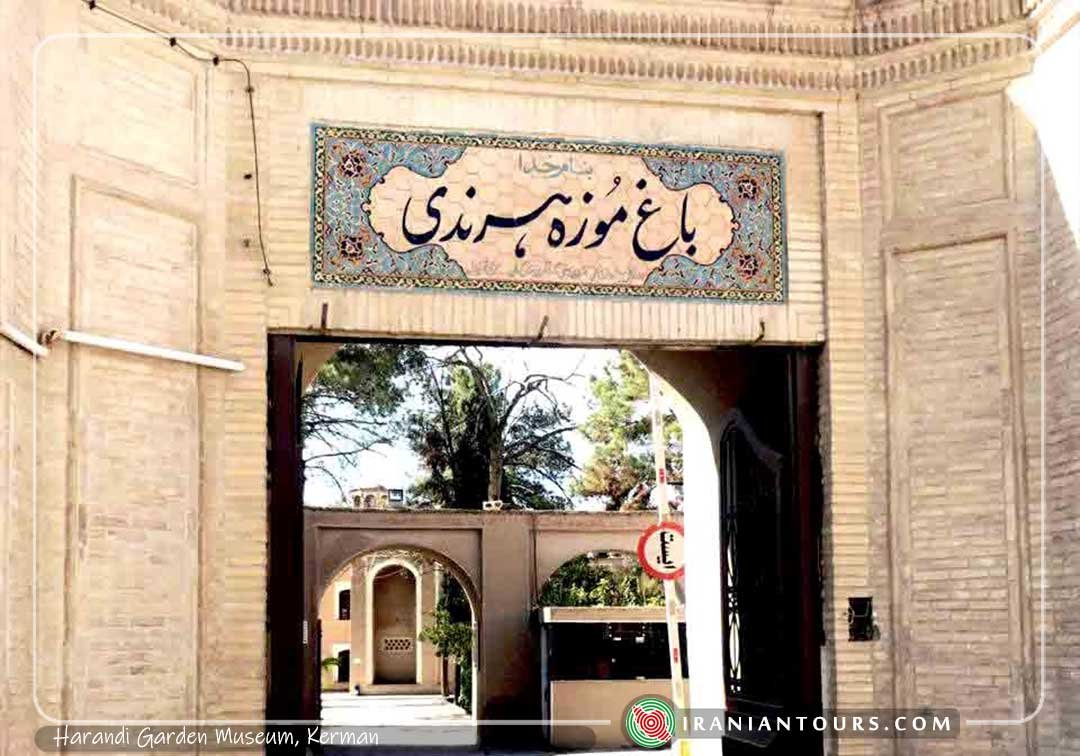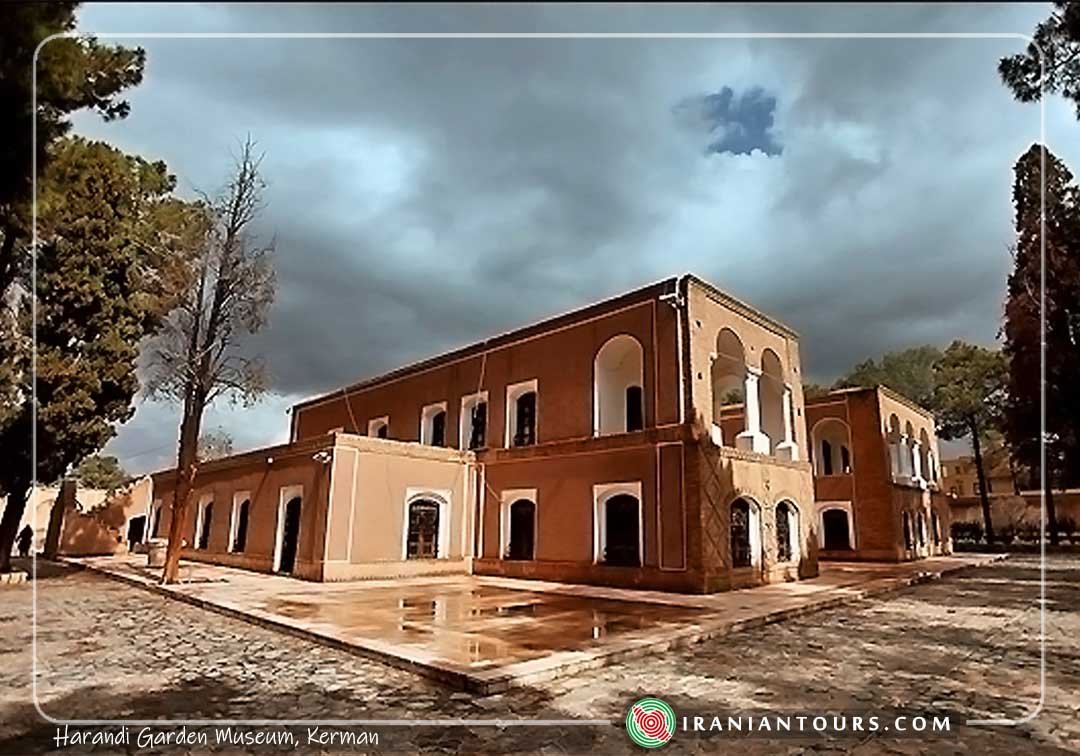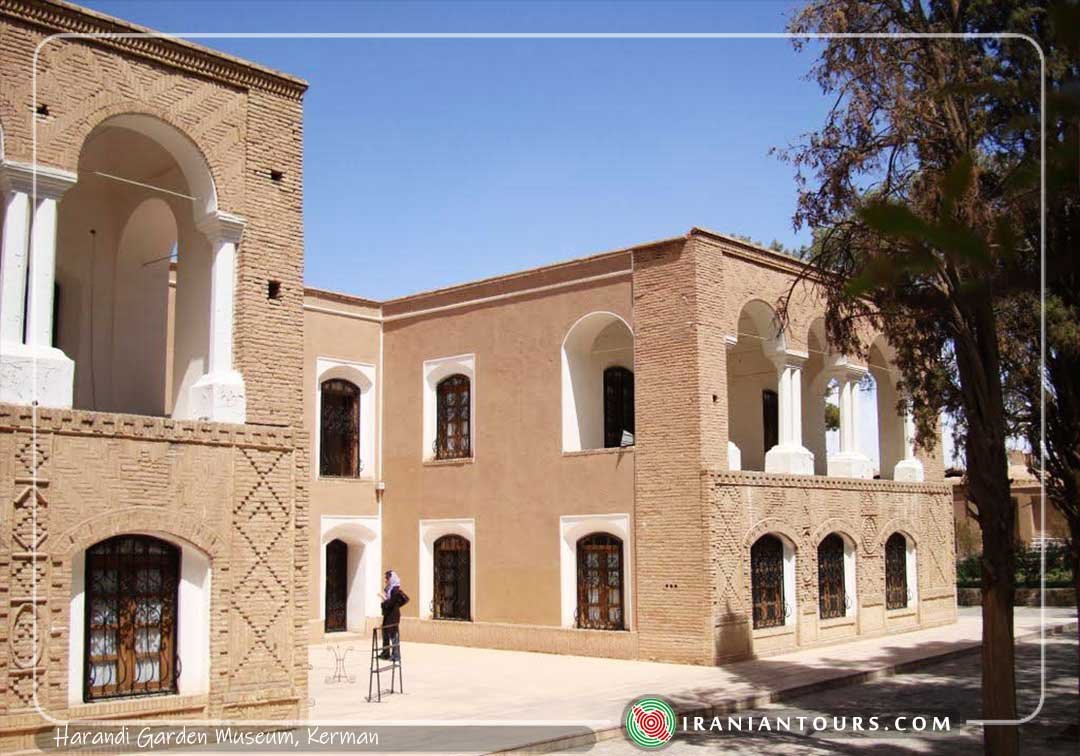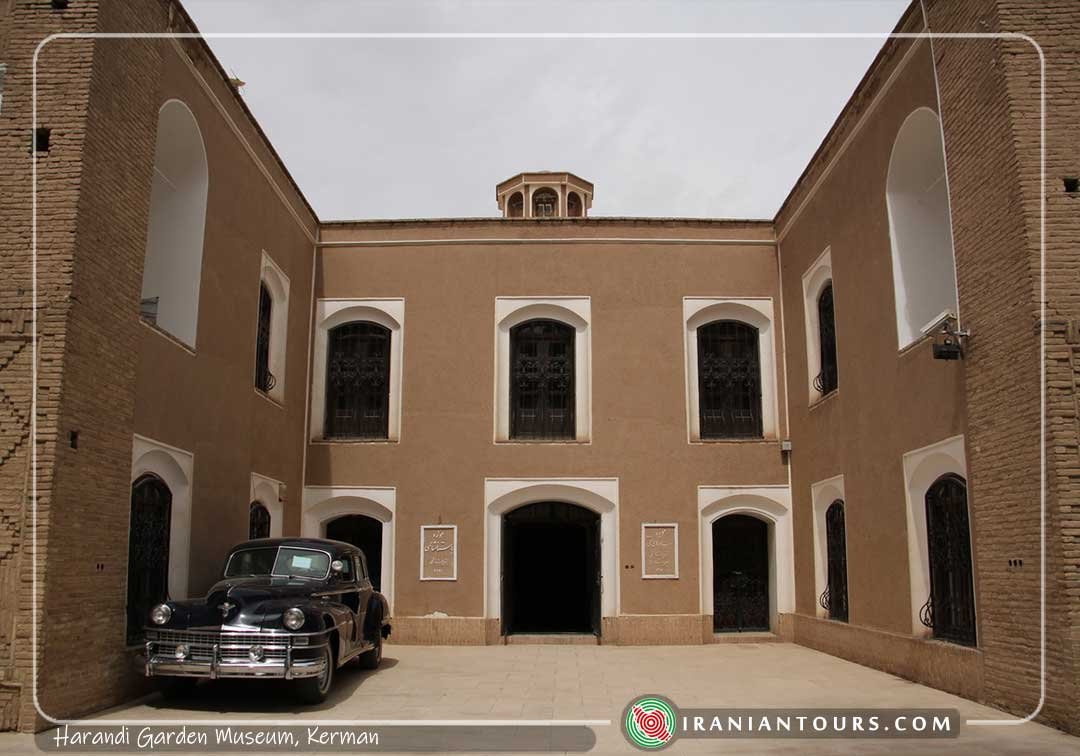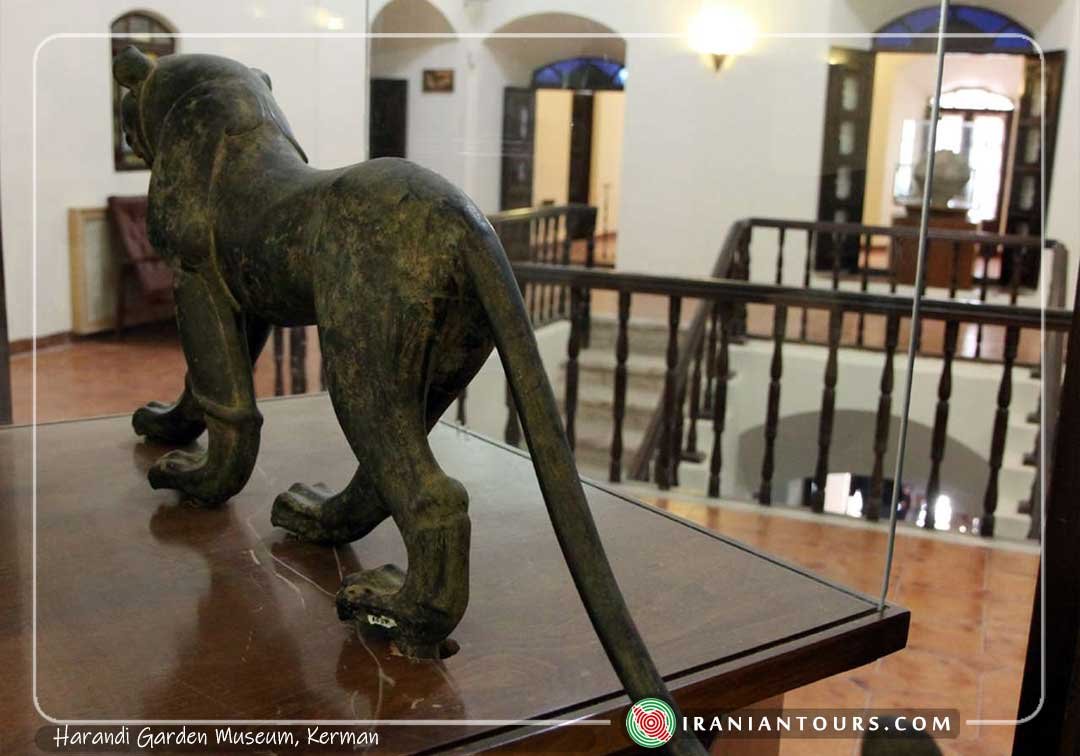Harandi Garden Museum
The Harandi Garden Museum, or originally known as the Harandi Garden or Bagh-e Harandi, is a twenty-five thousand square meter garden in the center of Kerman. This garden was originally built by Mohammad Reza Khan Adl for recreational purposes one of Kerman’s officers more than a century ago. This Garden was subsequently acquired by the Harandi family, one of Kerman’s prominent merchants. Harandi’s garden is famous for being Reza Shah’s whereabouts during his exile. Currently, the Harandi museum garden consists of a very beautiful garden where you can find old pines and a series of pomegranates, figs, berries, apple trees and flowers such as roses and two museums, the museum of traditional instruments and the museum of archeology.
During the reign of Mohammad Reza Khan Adl, the Harandi garden was used for recreational purposes and after being acquired by the Harandi family, it became a family residence. During its hundred years of existence, especially during the life of the Harandi family, this garden was often used as a residence to receive political and military figures and other characters from the country who traveled to Kerman. Historically the trees in the garden were watered by aqueducts from Tahmasebabad and Hasanabad, of which one passed near the main entrance and the other near the residence.
The main building of the Harandi garden, which is now the building where the Harandi museum is located, was designed by the son of the main owner, who finished his career in France. The design of this building is based on Persian architecture to make it a Persian mansion. This building has been built in the northern part of the garden and consists of two floors. In addition to the main room and rooms of different types and sizes, there are two covered porches on the second floor. Later, side buildings such as the crew building, bathroom, stables and cattle were added. Harandi’s garden design is based on square and rectangular geometric designs, which were essential in Persian gardening.
Museum of traditional instruments
The Kerman Traditional Instruments Museum was opened in 2002 and displays instruments such as Qichak, Santour, Qanun, Rabab and Oud, which are among the artistic works of teachers such as Yahya, Nariman and Saud.
Harandi Archeology Museum
The Harandi Archeology Museum is where the ancient civilizations of Kerman and the historical connection to nearby regions are presented. This museum is divided into four parts, the Shahdad Desert Civilizations, the Halilrud Cultural Area, the history of Kerman and the Islamic era. Objects such as ceramics, stones, metal slabs and etc. can be found in the Shahdad civilizations section. According to archaeological excavations, during the third and fourth millennium BC, artisans lived in Shahdad with a great capacity for making stone and metal tools. In the Halilrud section, several very valuable objects are exhibited such as a beautiful and delicate gray ceramic with a history of more than five thousand years ago. In addition to the aforementioned, you can find artifacts such as ceramic jars, plates and etc., from the Achaemenid period.

